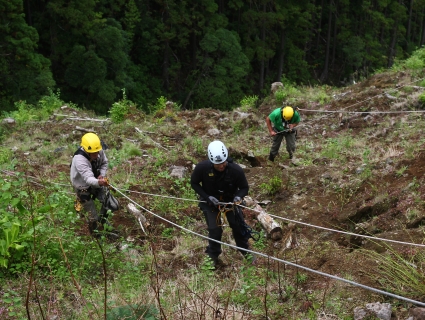Every four years the "Atlas of Priolo" is conducted, with 50 volunteers counting all the priolos in the world in one or two days. This Atlas allows a more robust estimation of the priolo population size.
Annually a census of priolo is conducted by a project technician in May and June, and in September a juvenile census is conducted in order to assess the reproductive success of the species. Every four years a winter census is also conducted. This monitoring allows assessment of the population trends of the bird and quick action if any problem is identified.
Native vegetation evolution is assessed in all the intervention areas annually, comparing the composition of random 10 x10 metre squares of vegetation between restored areas and control areas. New plantations are also monitored to assess their success and identify problems. When an intervention area presents other sensitive issues, such as proximity of water lines, new monitoring schemes, for example water analysis, are put in place in order to ensure success and safety of all the interventions.
Finally, socioeconomic impacts of the project in terms of investment and ecosystem services provision are also monitored.
